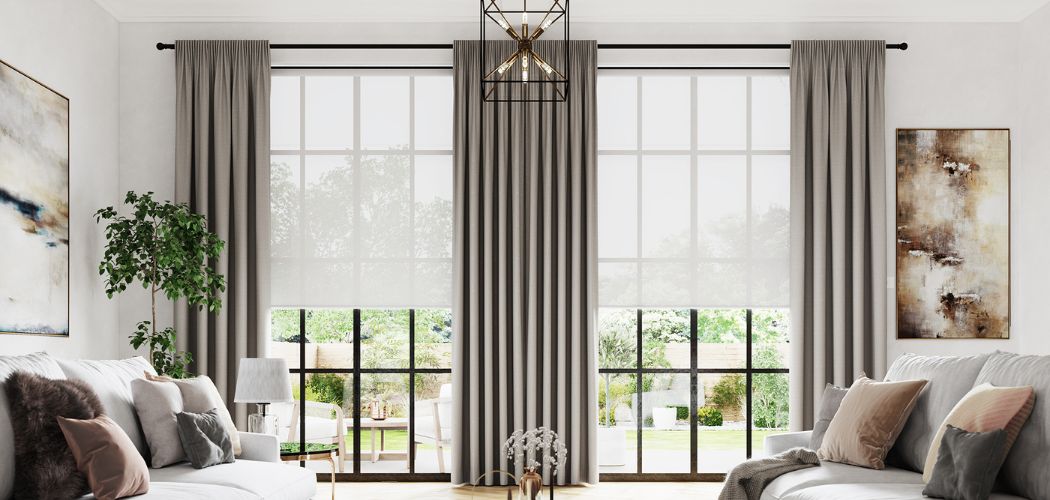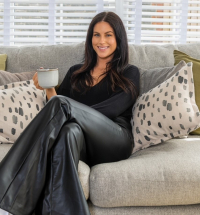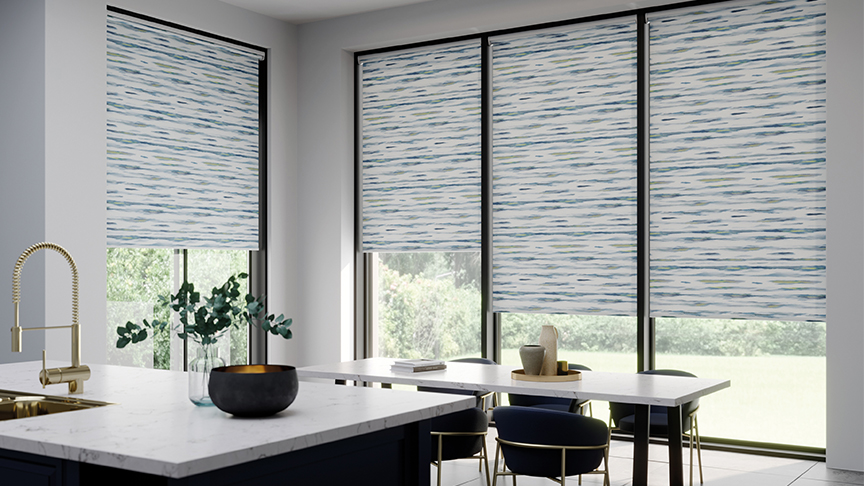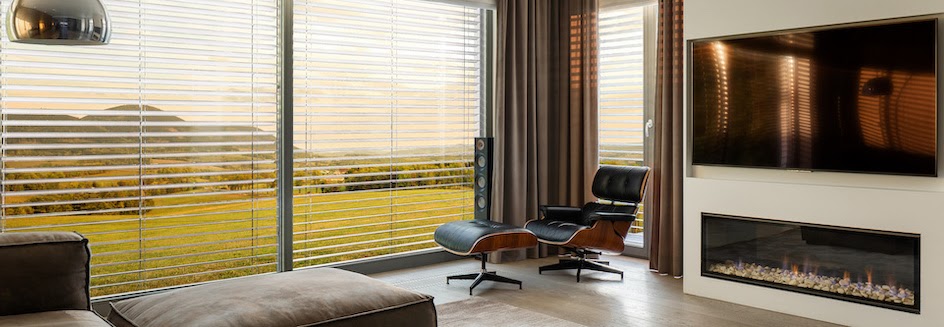If your living room is feeling a bit lacklustre, your bedroom is begging for a makeover, or you simply want to add some flair to your favourite space, but don't know where to start with different types of curtains, fear not! We're pulling together a list of curtain styles, functions, and the rooms they'll look best in. Take your window spaces from drab to fab with these fabric showstoppers.
Curtains by style
Let's lift the curtain on the stars of the show. From perfectly pleated panel curtains to sophisticated goblet styles, here's our comprehensive list of curtain styles.
1. Single-panel curtains
Single-panel curtains are a solo star. They're the main character - the James Dean of curtains if you will.
Single-panels come as one curtain that covers your entire window, and they're pulled to one side when opened.
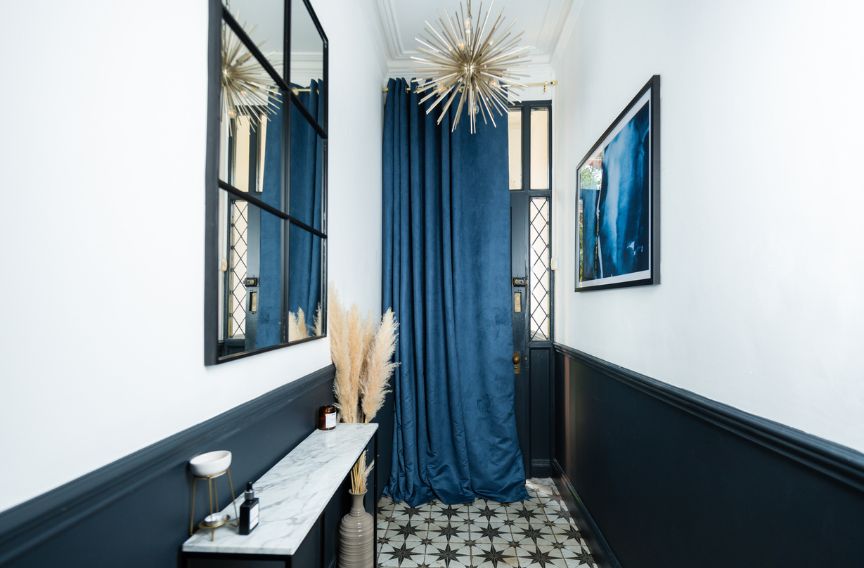

Best for: Single-panel curtains give almost any room a chic, modern look. They work best in rooms with smaller windows or less space.
Pros of single-panel curtains
- Budget-friendly: If you're counting your pennies, single-panel curtains can be more budget-friendly than buying pairs.
- Easy, breezy installation: Hanging a single panel is a breeze! There’s no need to fuss over perfectly matching pairs - just pop one on the rod, and your window is ready.
- Versatile design: Whether your vibe is minimalist or maximalist, single-panel curtains can adapt to various design styles, offering versatility in decor choices.
Cons of single-panel curtains
- Limited privacy: If privacy is high on your list, single-panel curtains might not provide as much coverage as dual panels. You might need to layer or consider adding blinds or shutters to get the seclusion you’re after.
- Less even light control: Depending on the time of day and the position of your window, single-panel curtains may offer uneven light distribution.
2. Panel-pair curtains
Panel-pair curtains are the dynamic duo of drapery (try saying that 5 times fast). Panel pairs are sold in…well…pairs, so you can place a curtain on either side of your window and pull each panel to the middle to draw them closed.
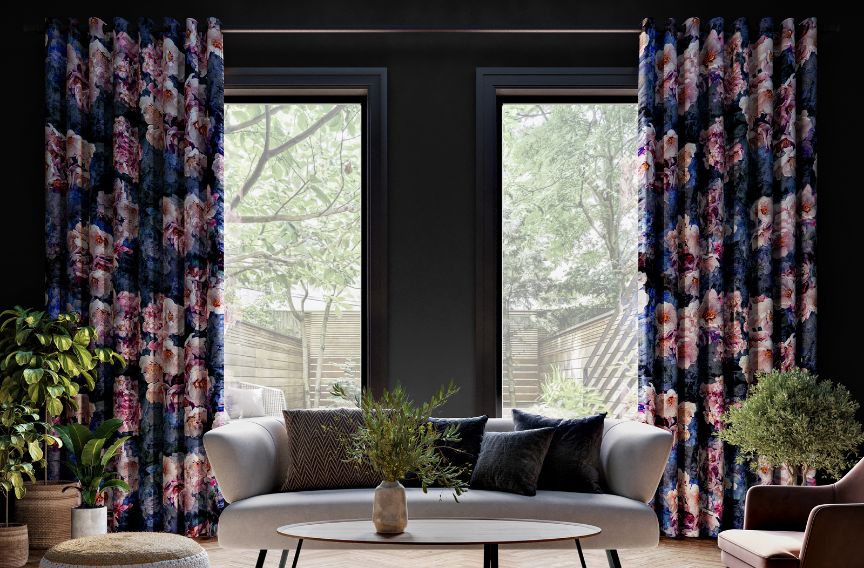

Best for: These classic curtains can hang in almost any room where you want to add a bit of grandeur.
Pros of panel-pair curtains
- Symmetry: Having two curtain panels brings symmetry to your space, making sure everything is aesthetically aligned.
- Full coverage: Enjoy enhanced privacy and light control with panel pair curtains.
- Versatility: These curtains seamlessly adapt to various decor styles, from traditional to modern and everything in between.
Cons of panel-pair curtains
- Space issues: In smaller spaces, hanging panel pairs might feel a bit overwhelming. The duet of drapery could be too much for more modest rooms.
- Budget battles: Double the panels might mean double the cost. Still, you should be able to find plenty of affordable styles without compromising on quality.
3. Pencil pleat curtains
Pencil pleat curtains are as sharp and polished as a new Staedtler. They earn their name from the pleated pattern along the head, which - in a shocking twist - resembles a row of pencils.
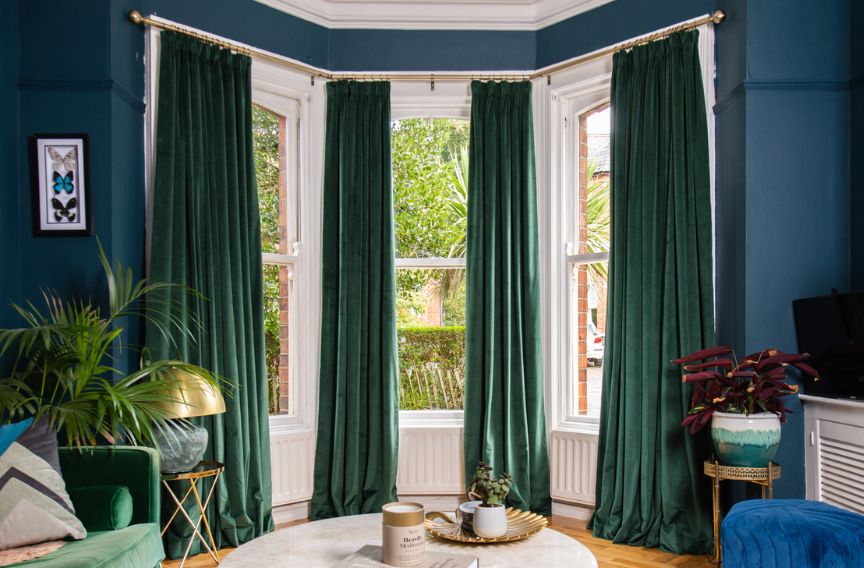

Best for: Bedrooms and living rooms that you want to dress up and down.
Pros of pencil pleat curtains
- Adjustable aesthetics: The adjustable nature of pencil pleats allows you to customise the fullness of the curtains. You can go for a more gathered, casual look or a tightly pleated, formal appearance.
- Tailored charm: Though less extravagant than box pleat curtains, pencil pleat curtains bring a sense of tailored elegance to your windows, adding a polished and refined look to your space.
- Easy clean: It's easy to remove their hooks and throw your curtains into the washing machine. Be careful to follow any cleaning instructions provided with the fabric.
Cons of pencil pleat curtains
- Hook hang-ups: Dealing with hooks can be a bit finicky, and getting them just right can be a struggle.
- Time-consuming installation: Hanging pencil pleat curtains can be a bit more time-consuming compared to other curtain styles because they have a more precise look.
4. Rod Pocket Curtains
Make like Houdini and get your curtain rod to disappear with the discreet design of rod pocket curtains.
The fabric has a fold at the top that is sewn closed to create a pocket, which then slides onto the curtain rod, giving them their very literal name.
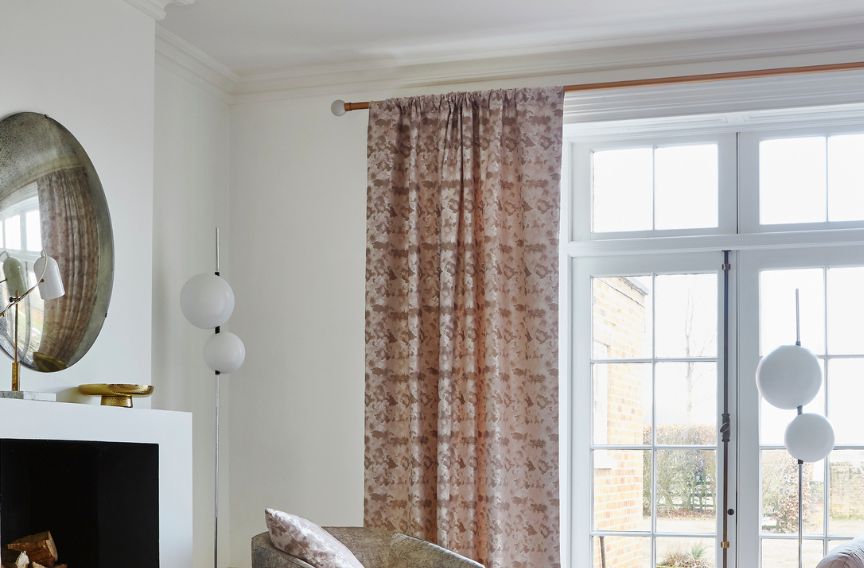

Best for: Rooms where they're more used as a decoration than for their functionality, ie. French doors where you don't need to open or close the curtains often.
Pros of rod pocket curtains
- Effortless elegance: Rod pocket curtains offer a simple and elegant look without the need for additional hardware like hooks or rings.
- Budget-friendly: Rod pocket curtains are often budget-friendly, making them a cost-effective choice for those looking to spruce up their windows without breaking the bank.
- Streamlined look: The rod pocket design creates a clean and streamlined appearance, perfect for those who appreciate simplicity and a neat aesthetic.
Cons of rod pocket curtains
- Snagging issues: Curtains with fabric that touches the curtain rod can often cause the blind to snag when opening and closing. To close the curtain smoothly, you'll need to pull from the outside and move inwards.
- Limited adjustability: The rod pocket design may limit the adjustability of the curtain length. If you're particular about getting the exact length, this could pose a challenge.
5. Pinch Pleat Curtains
We know they're too good to be true, but don't go pinching yourself over pinch pleat curtains! These ever-popular pleated curtains are stitched and 'pinched' at the top to create a formal look that flows like a dream.
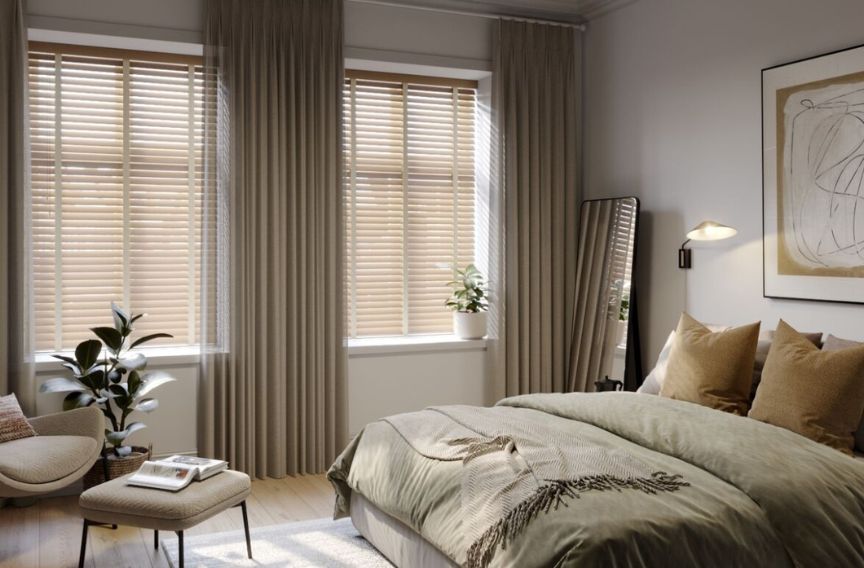

Best for: Master bedrooms, dining rooms and larger living rooms.
Pros of pinch pleat curtains
- Easy installation: Their design is simple and easy to install with either a headrail or a rod. With that said, we recommend that you use a headrail as it's easier to open and close.
- Texture and dimension: The pinch pleats add texture and dimension to your windows, creating an eye-catching focal point.
Cons of pinch pleat curtains
- Higher cost: Achieving pinch pleat perfection might come with a higher price tag compared to some other curtain styles.
- Excess fabric: The excess fabric can result in bunching, which makes it harder to open and close the curtains freely.
6. Goblet pleat curtains
Become a style sommelier by hanging goblet pleat curtains that hold style and sophistication in every fold.
Goblet pleat curtains have shapes that resemble a goblet or a wine glass at the top of the fabric.
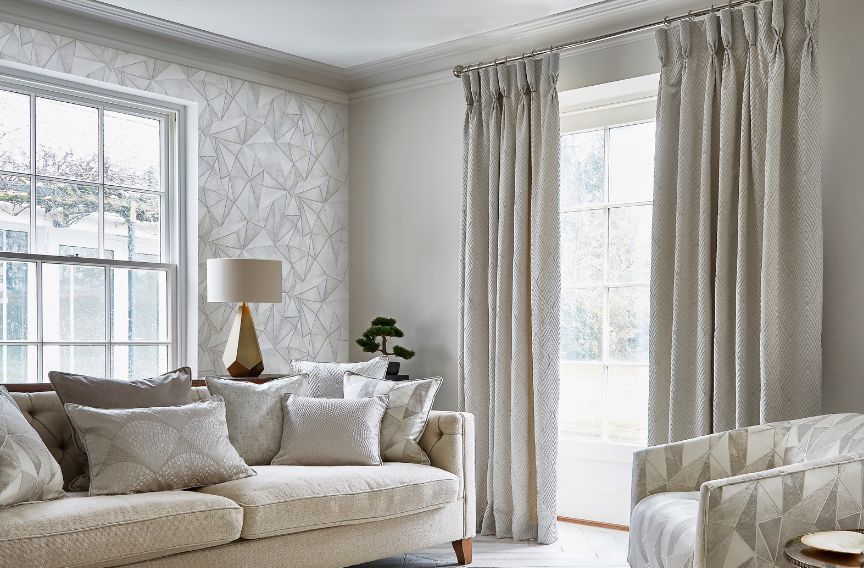

Best for: Large, formal rooms with high ceilings.
Pros of goblet pleat curtains
- Unique shape: The goblet pleats add a uniquely curved and tailored charm to your windows, creating a graceful focal point.
- Elegant aesthetics: Goblet pleat curtains exude a sense of timeless elegance and sophistication.
Cons of goblet pleat curtains
- Limited adjustability: Because of the delicate structure of the pleats, they should be used to frame/decorate your window rather than be used for privacy and functionality.
- Formality: The formal look of goblet pleat curtains might not suit every room or decor preference. In more casual spaces, they could feel a bit overdressed for the occasion.
7. Eyelet/grommet curtains
These curtains might as well have 'hassle-free' written on the front of them. But the design team have told us that would look terrible, so we won't be doing that.
Eyelet curtains, sometimes referred to as grommet curtains, are a contemporary choice for a modern home. Eyelets are the circular cutouts, and grommets are the curtain rings that encase the eyelets. These features allow your curtains to glide across the rod with ease.
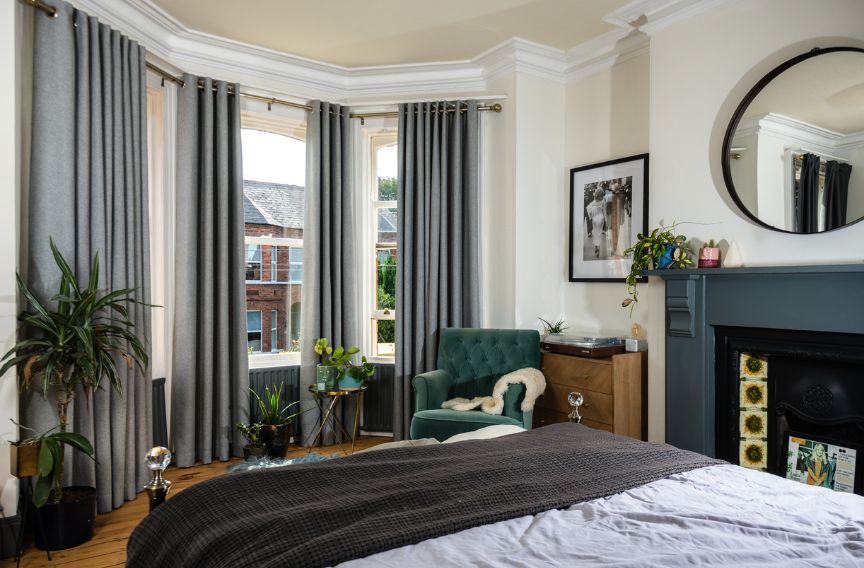

Best for: Pretty much any room, including bedrooms, where you'll regularly be opening and closing your curtains.
Pros of eyelet curtains
- Effortless opening and closing: Reinforced eyelet rings make opening and closing your curtains effortless, making them a great candidate for almost any window.
- Versatile pattern choices: When you close eyelets, they are almost entirely flat, which makes them perfect for even the most ornate patterns.
Cons of eyelet curtains
- Light control issues: When placed inside a window recess, eyelet rings allow light in even when the curtain is closed. For a total blackout, install eyelets several inches above the window recess.
- Budget pusher: Eyelet curtains are a bigger style to accommodate the folding pattern. This makes the fabric slightly more expensive, but there are exciting choices at every price point.
8. Tab top curtains
Bring a slice of holiday bliss home with you with tab-top curtains. These are for the people who dream of living on the Mamma Mia! set.
They're a breezy, modern style that's 100% fabric. Whether your decor is beachy, boho, or somewhere in between, tab-top curtains will be right up your street.
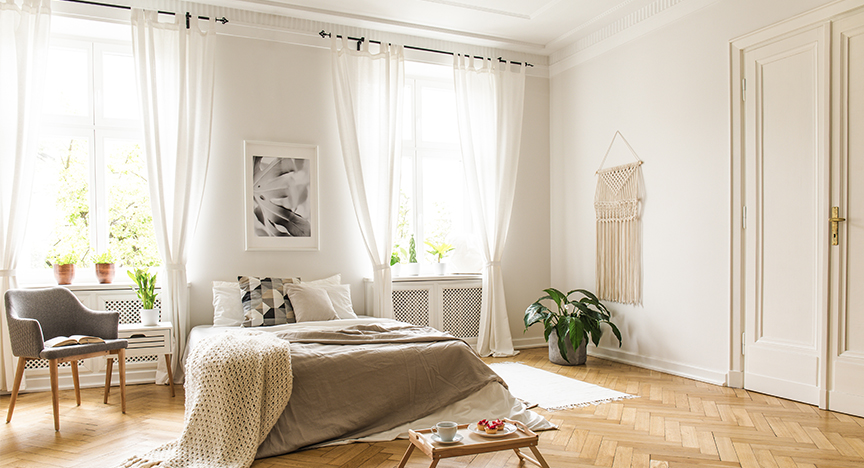

Best for: Homes and rooms with farmhouse, countryside, beach, or contemporary styles.
Pros of tab top curtains
- Effortless installation: Hanging tab top curtains is as breezy as the style itself. The tabs easily slide onto the curtain rod, making installation a quick and painless process.
- Casual chic: Tab top curtains have a casual and laid-back aesthetic, perfect for creating a relaxed and comfortable atmosphere.
- Efficient opening and closing: The loops on tab top curtains allow for efficient opening and closing, providing easy access to natural light and maintaining privacy with a simple pull.
Cons of tab top curtains
- Lack of light control: While stylish, tab top curtains may let in a bit more light around the loops. If you prefer a darker room, this could be a minor inconvenience.
- Informal aesthetic: The casual and informal look of tab-top curtains might not suit formal or elegant decor styles if that's what you're after.
Curtains by function
1. Blackout Curtains
What do vampires, cave trolls and light sleepers all have in common? They want to keep the sunlight out of their bedrooms. Luckily, we have just the thing if you're any of the above.
These blackout window treatments will keep out any unwanted light with their heavyweight fabrics, so you’ll be enveloped in cosy darkness any time of day.
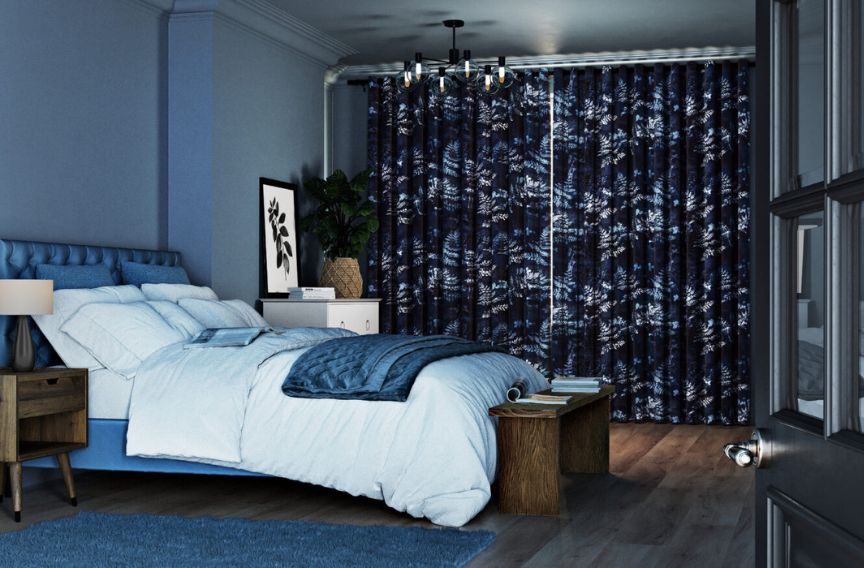

Best for: Bedrooms, home cinemas, and guest rooms. Also perfect for shift workers who need to sleep during the day.
Pros of blackout curtains
- Lights out: Blackout curtains excel at blocking light, creating a dark and dramatic ambience. Perfect for movie nights, midday naps, or creating a cosy sleep sanctuary.
- Privacy protectors: Blackout curtains provide a high level of privacy by preventing outsiders from seeing into your room, making them ideal for bedrooms and spaces where privacy is crucial.
Cons of blackout curtains
- Heavier fabric: Blackout curtains are often made of heavier fabrics, which can be challenging to handle during installation. Ensure your curtain rod can support the weight.
- Constant darkness: While they excel in creating darkness, blackout curtains can turn your room into a bit of a Batcave during the day. If you enjoy natural light, consider pairing your blackout curtains with blinds or shutters.
2. Thermal Curtains
Like Goldilocks, you don't want to be too hot or too cold. You want your space to be just right. That's where thermal curtains come in.
These thick curtains keep the cold out and the warm in during winter, and in summer, they keep things cool.
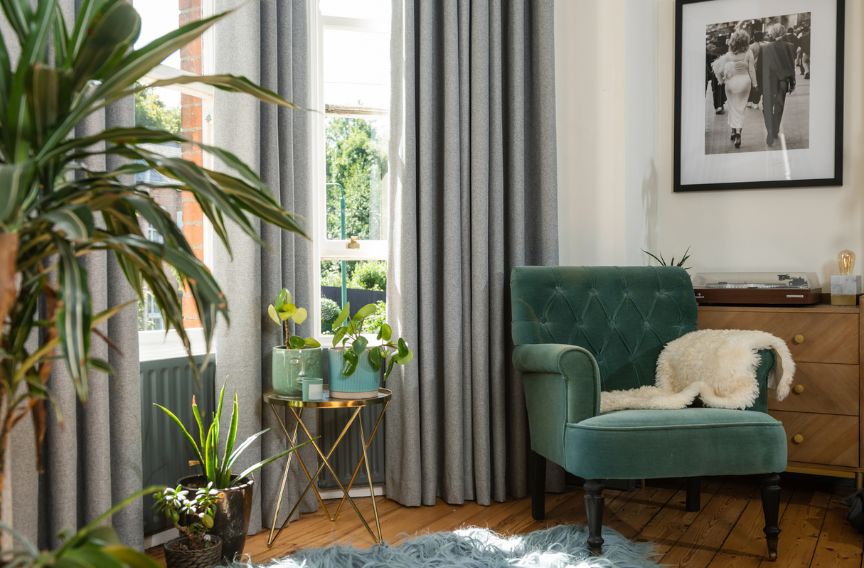

Best for: Regulating the temperature in almost any room throughout the house.
Pros of thermal curtains
- Climate control: These curtains help regulate room temperature by blocking out cold drafts in winter and preventing excessive heat in summer.
- Energy efficiency: By reducing the need for heating or cooling, thermal curtains can contribute to energy efficiency, helping you save on utility bills and reducing your environmental footprint.
Cons of thermal curtains
- Heavier fabric: Thermal curtains are often made of heavier fabrics, which can be challenging to handle during installation. Ensure your curtain rod can support the weight.
- Darker rooms: Due to their insulating properties, thermal curtains might block more light than other curtain types. If you prefer a well-lit room, this could be a consideration.
FAQs
What are non-eyelet curtains called?
Curtains without eyelets are commonly referred to as 'rod pocket curtains'. In these curtain styles, a pocket or sleeve is sewn along the top edge, allowing the curtain rod or pole to be threaded through. This creates a gathered and pleated look along the top of the curtains.
Which curtain style is best?
The best curtain style depends on your specific needs and preferences. For a classic and timeless look, rod pocket curtains offer a simple and elegant option. If you prefer a more modern and streamlined appearance, eyelet curtains provide a contemporary touch. Thermal curtains are excellent for energy efficiency and climate control. Ultimately, the best style is the one that complements your decor, meets your functional requirements, and aligns with your aesthetic taste.
Can you use blinds and curtains together?
Of course! If you're really finding it too tough to choose between blinds and curtains, then yes, you can have the best of both worlds. Using blinds and curtains together can create a temporary look in the home, while also having a whole host of practical benefits, too. Installing wooden blinds or Venetian blinds in the living room, for example, can give you that extra control over light levels and privacy - particularly if you have thinner curtains that you don't want to be opening and closing all day long.

